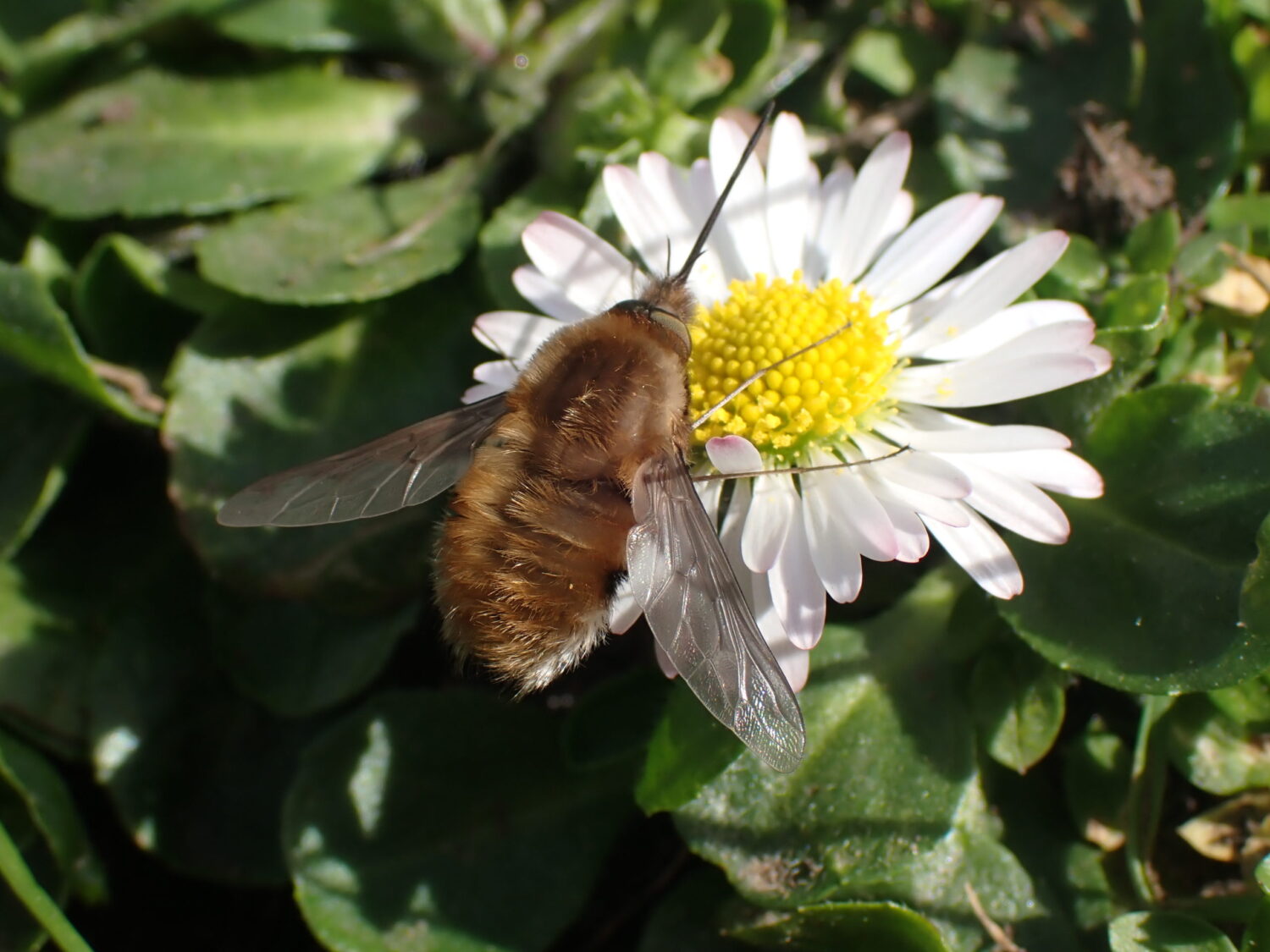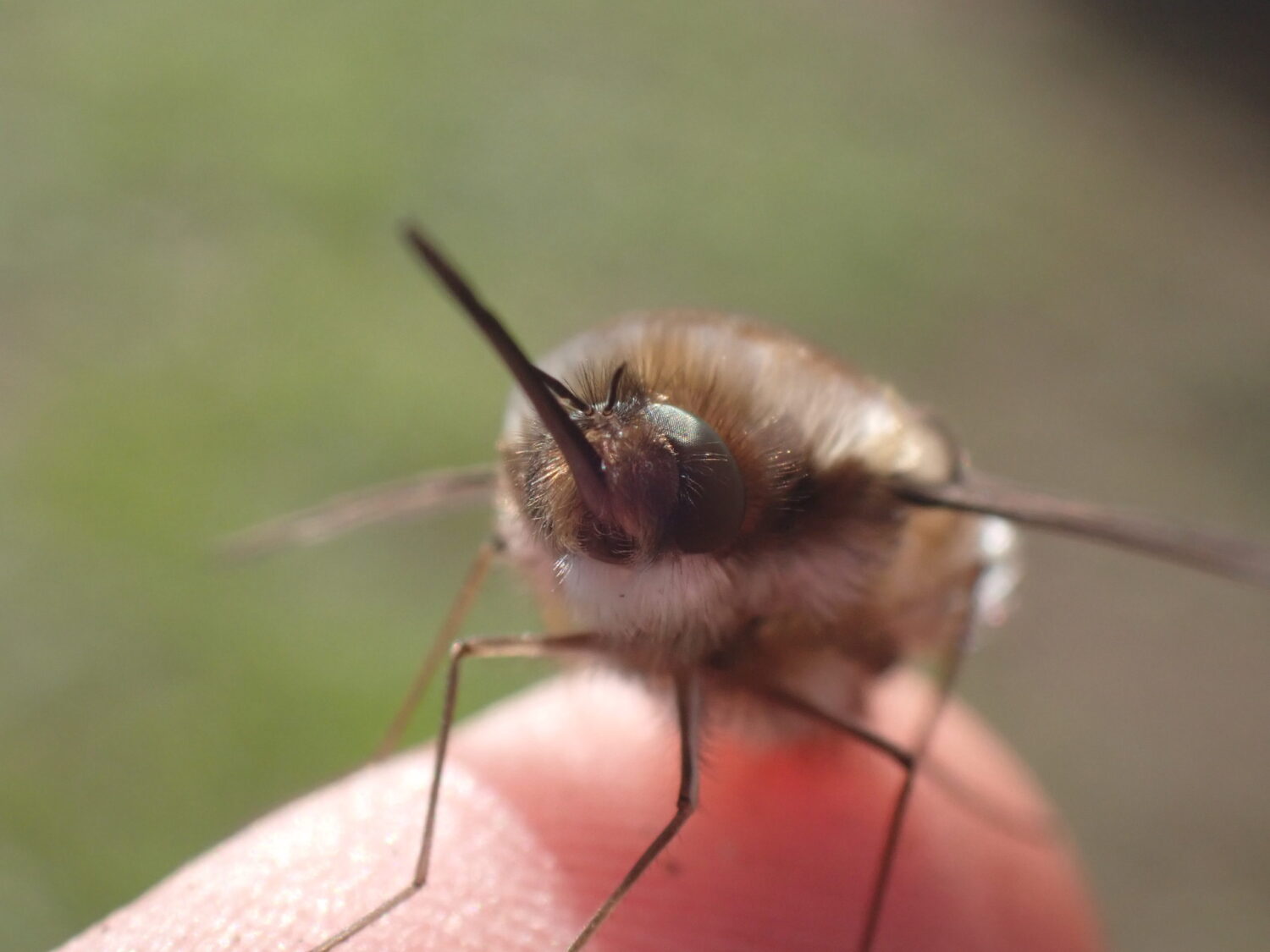NHSN Conservation Officer, Charlotte Rankin, introduces you to a fly in disguise, the bumblebee-like Dark-edged Bee-fly.
A fly in a bumblebee suit, the Dark-edged Bee-fly (Bombylius major) is a familiar sight in spring. Using their long proboscis to obtain nectar for fuel, adults can be seen darting around and feeding on spring flowers such as Primroses and Grape Hyacinth. Bee-flies are often mistaken for a bee, but unlike bees, flies have one pair of wings, short antennae and much bigger eyes.
As suggested by its name, the Dark-edged Bee-fly is distinguished from similar bee-fly species by the dark upper edging of its wings. To distinguish between the sexes, the males have eyes that meet at the top of the head whereas the females’ eyes do not meet. This a spring-flying species that you can encounter in the North East, including in your own garden.

Behind this cute and fluffy appearance, there is a darker but fascinating element of its lifecycle. In contrast to the adults, the larvae of bee-flies feed upon other insects and are referred to as parasitoids. The survival of the Dark-edged Bee-fly depends on solitary bees that nest in the ground, an association that has occurred for many millennia.
Females hover around areas where solitary bees have dug nest burrows and flick their eggs towards the entrances of these nests. To aid this, females coat their eggs with soil or sand dust by dabbing the tip of their abdomen on the surface. There are a variety of reasons why females may do this. The heavier weight may make it easier to eject her eggs through the air or the dust could provide the eggs with camouflage. Upon finding a nest burrow, the female hovers in position and skilfully ejects an egg towards it by one swift flick of her abdomen. She will then proceed to seek other burrows and continue to eject her eggs.
Once a larva hatches, it crawls further into the nest burrow and waits for the bee larva to grow to almost full-size. The bee-fly larva then fastens on to the bee larva, feeding on its body fluids and eventually killing it. The bee-fly remains within this burrow until the following spring and begins the lifecycle again as an adult.

The Dark-edged Bee-fly is one of many species from the bee-fly family and there are around 11 species here in the UK. Collectively, they parasitise a variety of insect larvae including those of solitary bees, wasps and moths. Here in the UK, the Dark-edged Bee-fly is the most common and widespread species. Look out for this distinctive fly darting around garden plants, scheming around mining bee nest sites or if you’re lucky enough, basking still on bare ground!